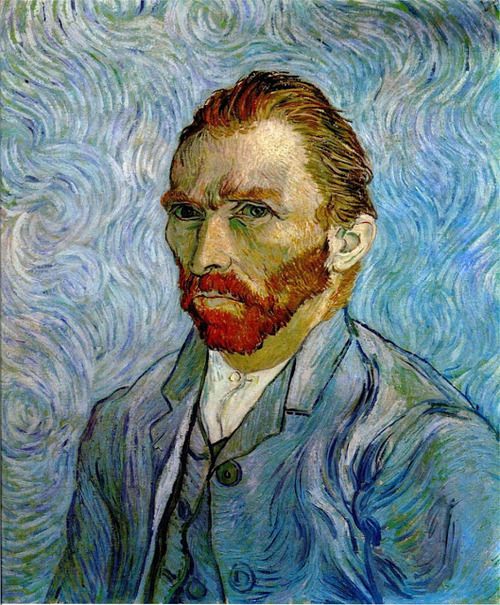
Self-Portrait. Saint-Rémy, 1889. Musée d'Orsay.
Self-portraits go way back and for good reason. As the author of 55 of them, Frida Kahlo explains, “I paint myself because I am so often alone and because I am the subject I know best.” It is cheap to boot. And as the smartphone has taught all of us, selfies are massively convenient: you can portray the fool holding the camera anytime and anywhere you want, including in the bathroom at 3 am. And it’s peaceful, no commotion and no treacherous personalities, other than your own of course. In fact, the advantages are so many, why do anything but self-portraits? It’s a mystery.
The Dutch have a particular love for self-portraits and certainly Mr. Sunflower Vincent van Gogh. Maybe because they came to the mirror earlier than other people (mid-15th century-ish) and never looked back. The Dutch are also famously cheap, so it could be that as well.
The oldest known self-portrait is by Jan van Eyck, Portrait of a Man in a Turban (1433), Wikipedia believes that the Norwegian Edvard Munch has the record with 70 self-portrait paintings, and master Rembrandt made 50 (and loads more etching and drawings) over a 40-year period. Van Gogh did his best but with some 37 didn’t catch van Eyck, or Rembrandt. On the other hand, he made all of his in a furious four years. That must be some sort of a record.
I love self-portraits and van Gogh shows why. The artist left alone with him or her self can be a powerful thing. In fact, most of us alone go a bit loopy; interesting private things start to slip out.
Munch, no stranger to mental illness, painted The Scream and a whole lot of lonely and depressing pieces. The Scream is a self-portrait, of sorts. It is ‘the study of the soul, that is to say the study of my own self.’ Frida was no stranger to personal anguish and pain, and that’s what she painted in her self-portraits, and some crazy religious shit. Rembrandt captures himself in every phase of his life, from pinnacle of success to destitution and infamy. Of course Egon Schiele’s portrays his naked self, masturbating, with an erection, whatever.
Van Gogh spent a lot of time alone and on top of that, probably related to that, was majorly bi-polar. He painted all of his works in a short ten-year period and died at 37, from a self-inflicted gun wound. Given the tragic mess that was his life, it’s a miracle he made one great piece, let alone dozens. It seems like the harder his life got, the more color in he put in his paintings, the bolder the strokes, and the more we love his work.
In 1886, van Gogh went to live with his brother in Paris. His selfie upon arriving is old style, Rembrandt with a red beard and unfashionable hat.
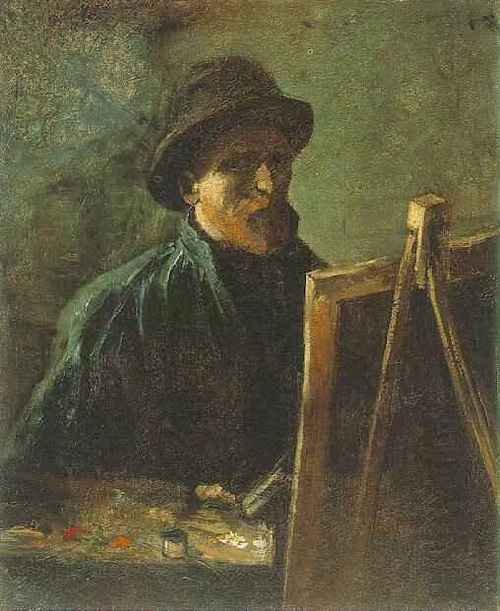
Self-Portrait with Dark Felt Hat at the Easel, 1886. Van Gogh Museum.
Brother Theo was an art dealer and Vincent quickly met ingenious creatives like Toulouse-Lautrec, Cézanne, Monet and his hero Paul Gauguin. Things got more interesting, and chaotic. I love those French bohemians. Praise the lord van Gogh didn’t meet up with Schiele over in Austria – not to worry, the perv was born four years after van Gogh landed in Paris.
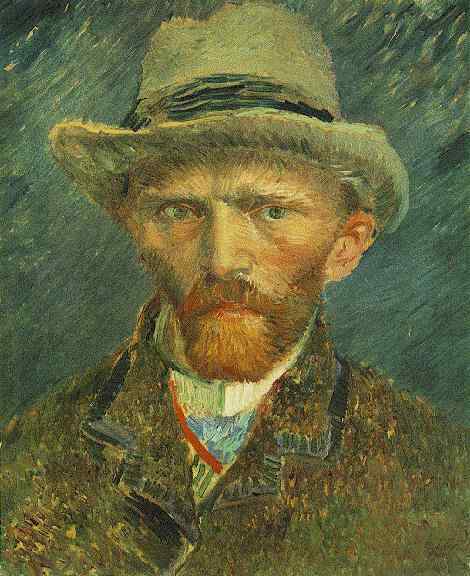
Self Portrait with a Grey Felt Hat. Paris, 1886-7. Rijksmuseum.
It’s when van Gogh went to the south of France to create an ultra-cool artist colony with his Parisian buddies that his self-portraits took off. The bohemian buddies never showed up, except Gauguin and we know how well that went.
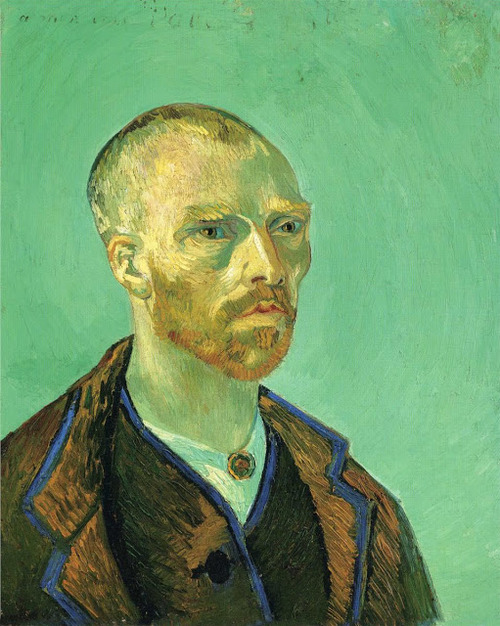
Self Portrait Dedicated to Paul Gauguin. Arles 1888. Harvard Art Museums.
The Parisians stayed in Paris and van Gogh went on to produce his most incredible works right where he was, in southern France. Including those mad sunflowers that are now every which where in the world.
Sure that Gauguin would eventually come down from Paris, he made a portrait just for the French master. Local villagers were worried about him and his scruffy looking self, but here he looks well kept, with a lovely men’s brooch holding his white shirt together. He is a bit gaunt and those eyes have a haunted look. Ok, it’s probably not the best gift to give a friend.
Gauguin came and went. A psychotic episode and part of an ear latter, institutionalized by popular demand, van Gogh made Self Portrait with Bandaged Ear.
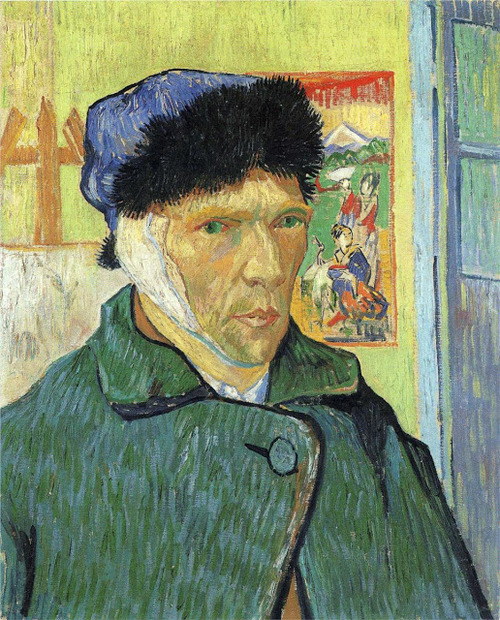
Self Portrait with Bandaged Ear. Arles, 1889. Courtauld Institute of Art.
It’s not easy to look at, at least not carefully, but his genius is all there. After this portrait he only posed facing the right side. As he recovered van Gogh turned out dozens more amazing paintings: Irises in a Vase, the darkly brilliant Prison Exercise Yard, and finally Road to Auvers. The recovery never really happened though and he passed in 1890.
Sources
- Martin Bailey, The Sunflowers are Mine. Francis Lincoln, 2003.
- Pascal Bonafoux. Van Gogh. Barrie & Kenkins, 1989.
- George T.M. Shackelford, Vincent Van Gogh: The Painter and the Portraits. Universe, 2000.









